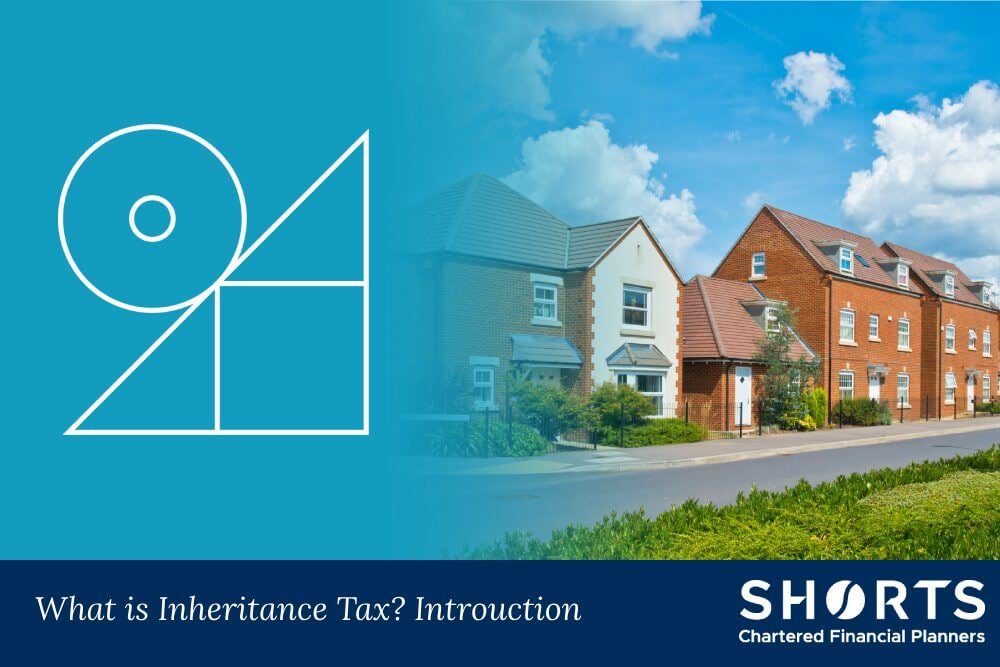
Inheritance Tax, or IHT, is a tax levied on the value of an individual’s assets (or estate) before it is transferred to their beneficiaries upon death. It can also apply to certain transfers into a trust during a person’s lifetime.
Understanding how IHT works can help you ensure your loved ones receive as much of their inheritance as possible with minimal issues. This means minimising tax burdens, providing clarity, and reducing unnecessary legal complications.
This essential guide will outline the key factors you need to know relating to UK Inheritance Tax arising on death (note it can also apply to certain transfers into a trust during a person’s lifetime, but this is excluded from this note).
How does Inheritance Tax work in the UK?
In the UK, when someone dies, their accumulated assets (such as their house, savings, and investments) are their "estate." If the value of this estate exceeds a certain amount, the government will charge Inheritance Tax (IHT) on it. Many estates in the UK are not subject to IHT because they fall below the threshold.
Inheritance Tax rate
Inheritance tax is paid at a standard rate of 40%, but it is payable only on estate value above a certain threshold.
If an individual leaves 10% or more of their net estate value (the total estate value less any debts) to a charity in their Will, their estate may be subject to a slightly reduced IHT rate.
Inheritance Tax thresholds
Inheritance Tax thresholds exist to provide a general IHT allowance for all assets owned by an individual and additional relief for individuals passing their main residence down to their direct descendants. Children, grandchildren and their spouses are the most common examples of direct descendants. However, foster, adopted, wards and step-children may also be included.
The following provides only a brief outline of these aspects of Inheritance Tax. We strongly recommend that you seek qualified advice when trying to calculate your potential IHT liability.
What is the nil-rate band?
IHT may be payable when an individual’s estate is worth more than the IHT nil-rate band when they die. This nil-rate band is currently £325,000. Assets valued up to this threshold can be passed on without incurring any Inheritance Tax.
What is the residence nil-rate band (RNRB)
Normally, a basic allowance of £325,000 applies to an individual’s estate before any Inheritance Tax is owed. However, there is an additional tax-free allowance for the family home, known as the residence nil-rate band.
The residence nil-rate band can add a further £175,000 to the Inheritance Tax allowance, but only in certain circumstances (e.g. when it is the individual’s main home which they leave to a direct descendent). These rules are quite complex, so we strongly recommend seeking professional advice when dealing with this issue.
The residence nil-rate band will reduce by £1 for every £2 that the estate is worth more than the £2 million taper threshold.
Inheritance Tax example combining the nil-rate band (NRB) and residence nil-rate band (RNRB)IMPORTANT: This is a simplified example to provide a basic understanding of how these allowances combine. In reality, many more factors must be considered, including Taper relief, gifts during lifetime, assets held in trusts, and certain reliefs (such as Business Relief for owners of business assets. The following example shows an estate value below the taper threshold. This means there is no reduction in RNRB.
Since the estate value (£1,200,000) is below the taper threshold, the RNRB is not reduced. If the property is not valued at £175k or more, then the individual would not be able to claim the full RNRB.
Couples that are married or in a Civil Partnership can benefit from allowances per person. The Personal Representatives of married couples and Civil Partners can claim any unused NRB/RNRB from their deceased spouse. The individuals, therefore, potentially have more than their own allowance. |
What assets are subject to Inheritance Tax?
An individual’s estate value combines many different types of assets and liabilities, such as:
- The value of the main family home
- The value of any other property (such as buy-to-let)
- The value of household and personal items
- The value of cash held either in person, in a bank or building society
- The value of an individual’s investments
- The value of insurance policies not in trust (such as life assurance)
- The value of any business interests
- Less any outstanding mortgages
- Less any other debts
These combine to provide a net value of the individual’s assets. The full taxable assets figure is this total, adjusted for any non-exempt gifts made within the last seven years and amounts above the nil-rate band or Residence nil-rate band.
In practice, the liability to IHT on an estate depends on many factors, including prior gifts, available reliefs, the value of the estate, and who the assets are left to. Bespoke advice should be sought before taking any action to plan for or comply with an IHT liability.
Why you should seek qualified advice on IHT and other Estate matters
Inheritance Tax may cause concern for individuals with significant wealth and assets, but this doesn’t need to be the case. The team at Shorts can help you preserve your wealth for future generations through estate and Inheritance Tax planning.
Our team does this by getting to know you, your current financial status, and your long-term goals. Based on this understanding, we can develop a personalised strategy to oversee and safeguard your assets while also ensuring there is enough capital for you to live comfortably long into retirement.
The Financial Conduct Authority does not regulate Estate Planning.

Dawn Sharman
I am part of the Private Client Team at Shorts, and have over 25 years of experience in accountancy. My background includes managing a portfolio of clients handling personal and corporate taxes, including estate planning during lifetime and death. My other specialism is working with clients in the medical profession.
View my articles
